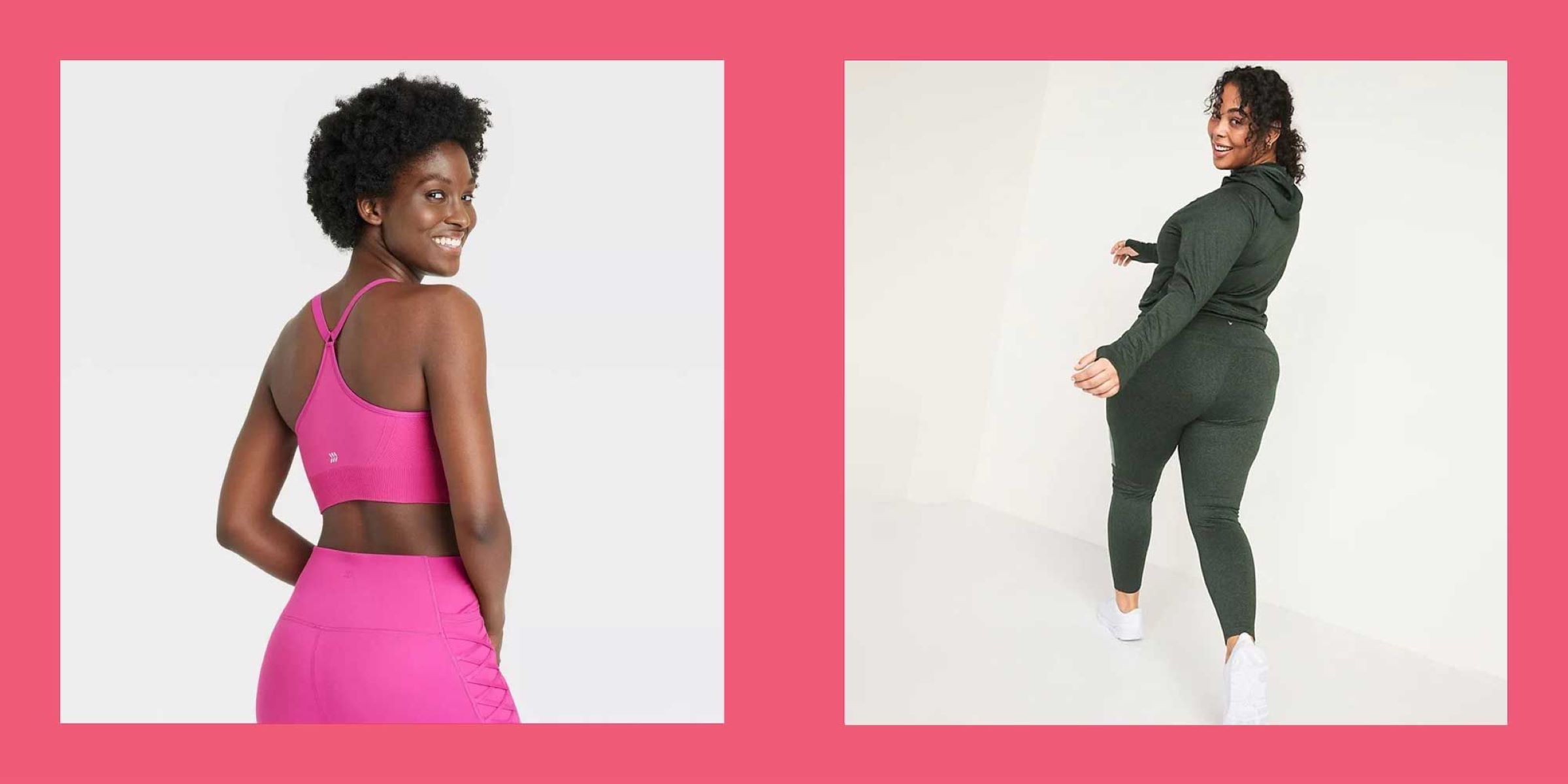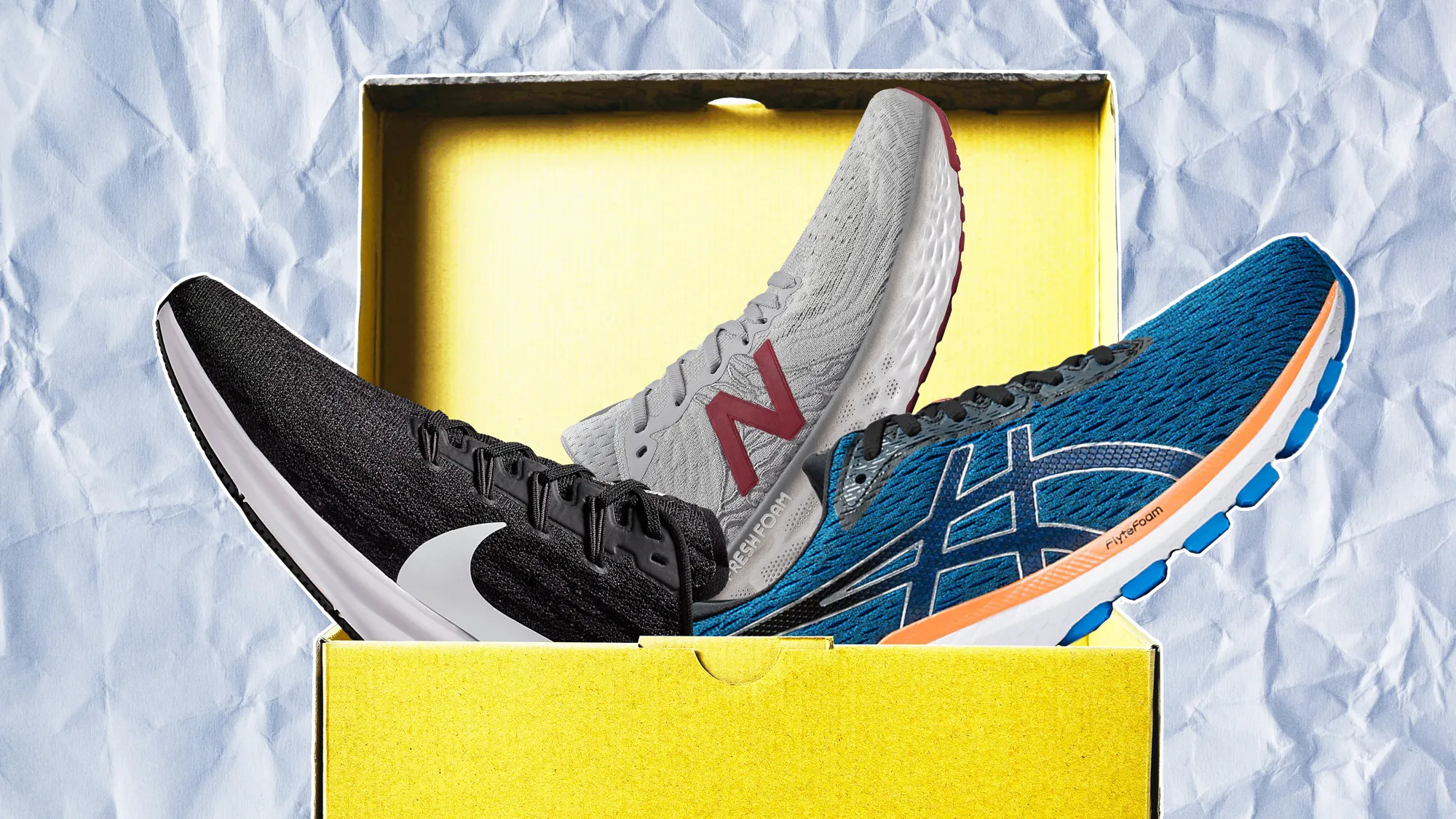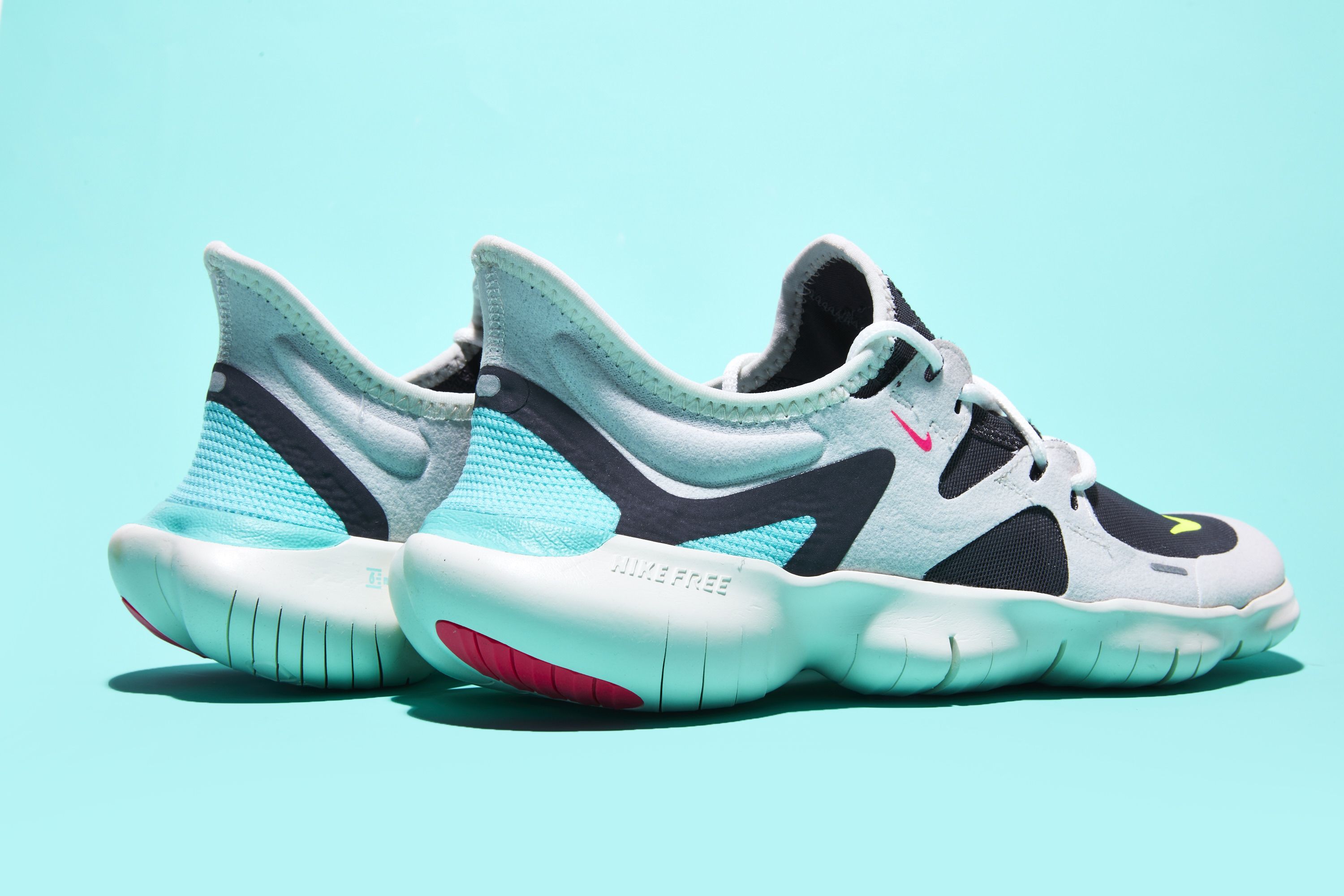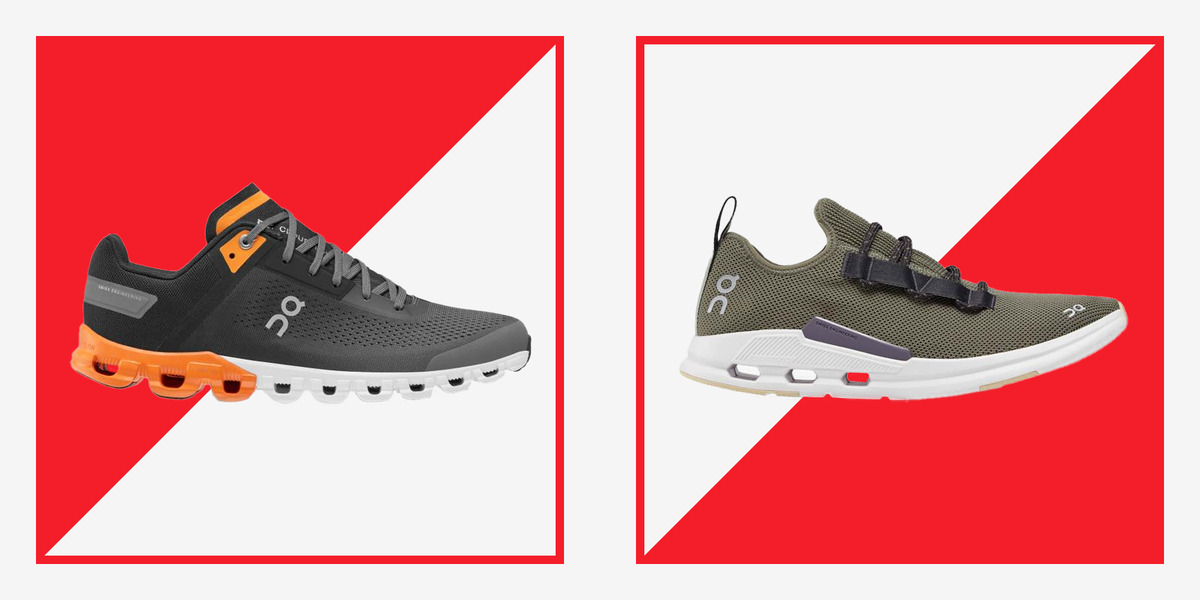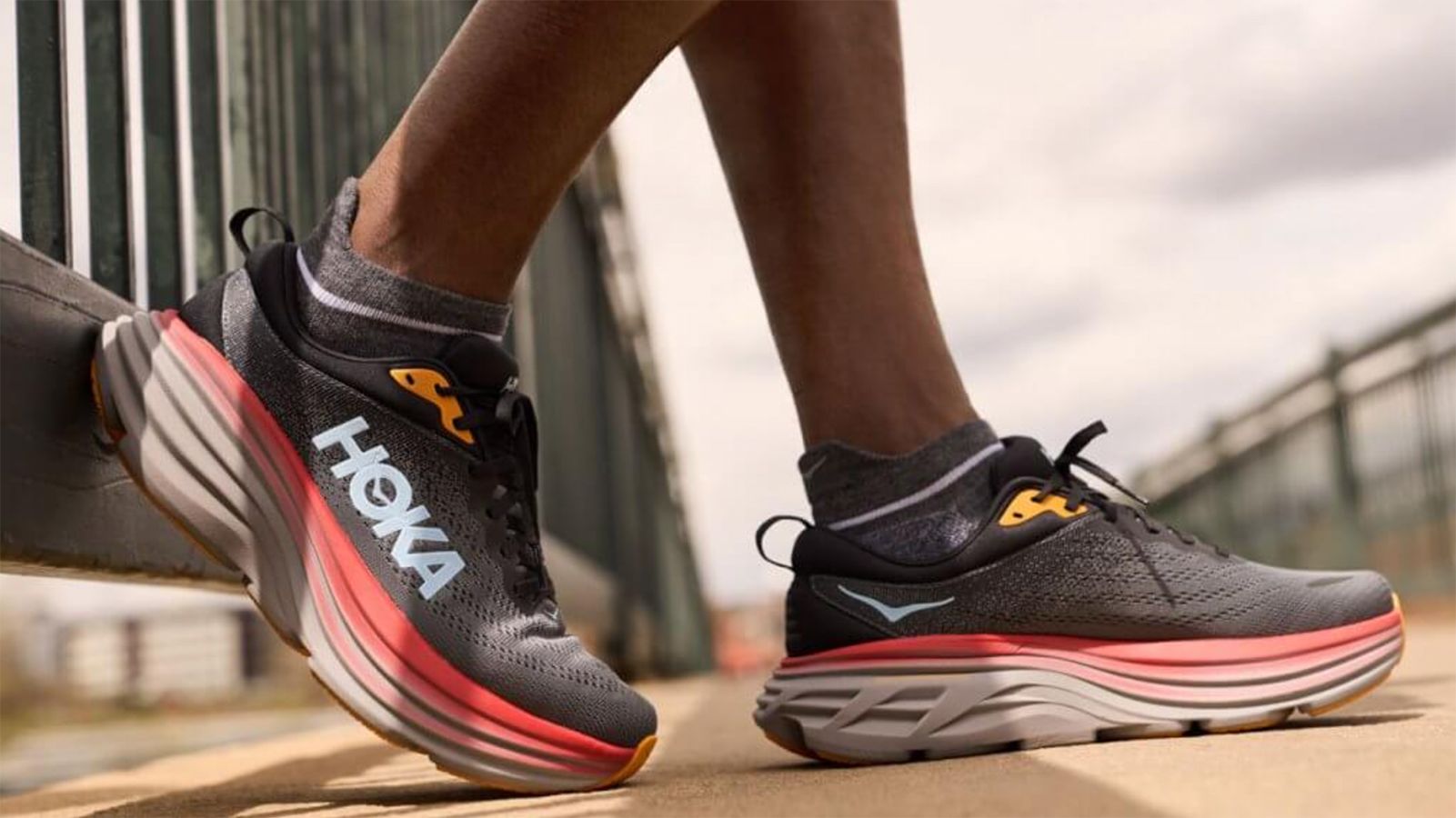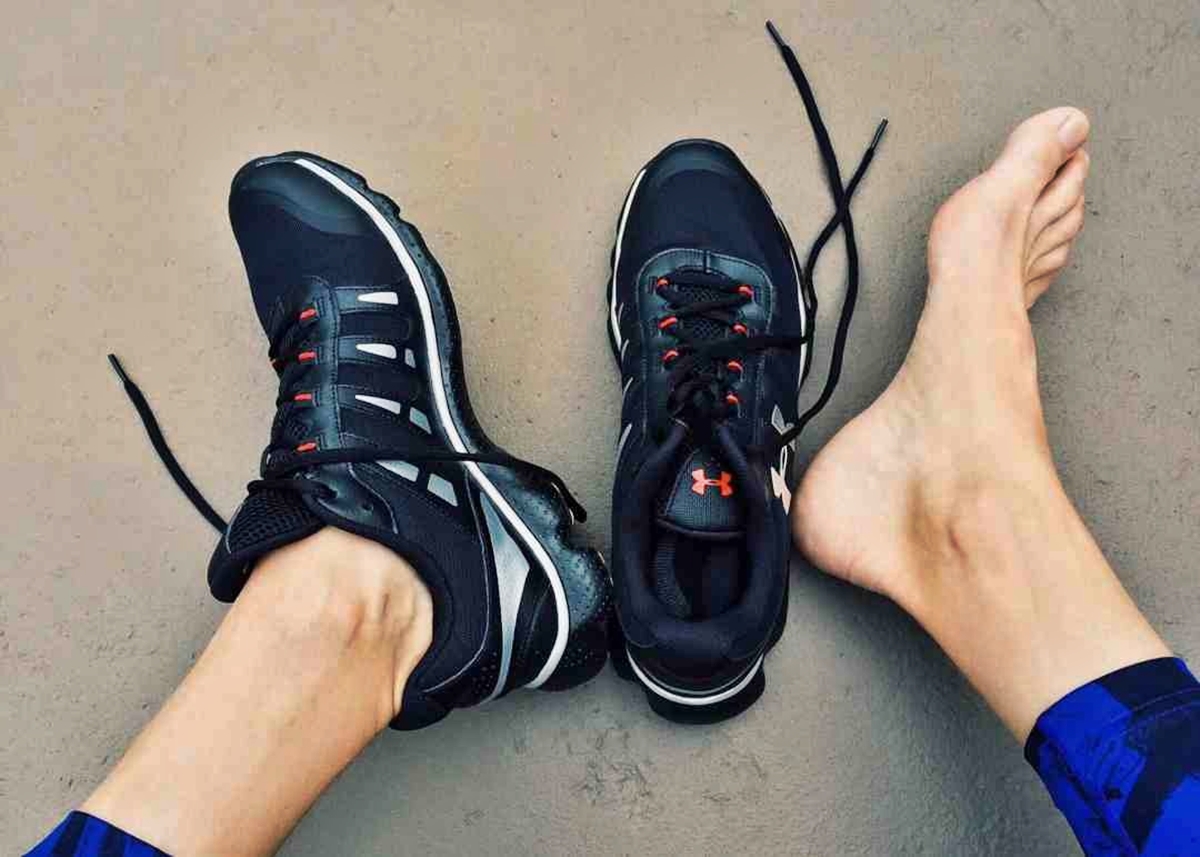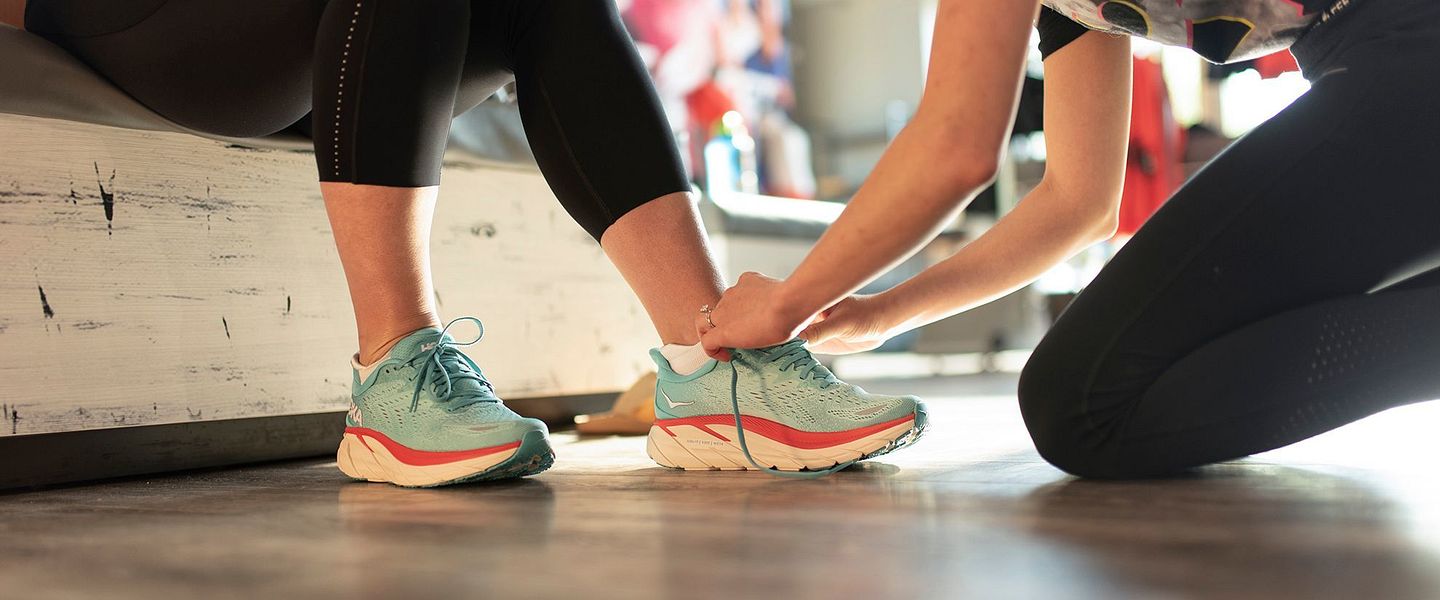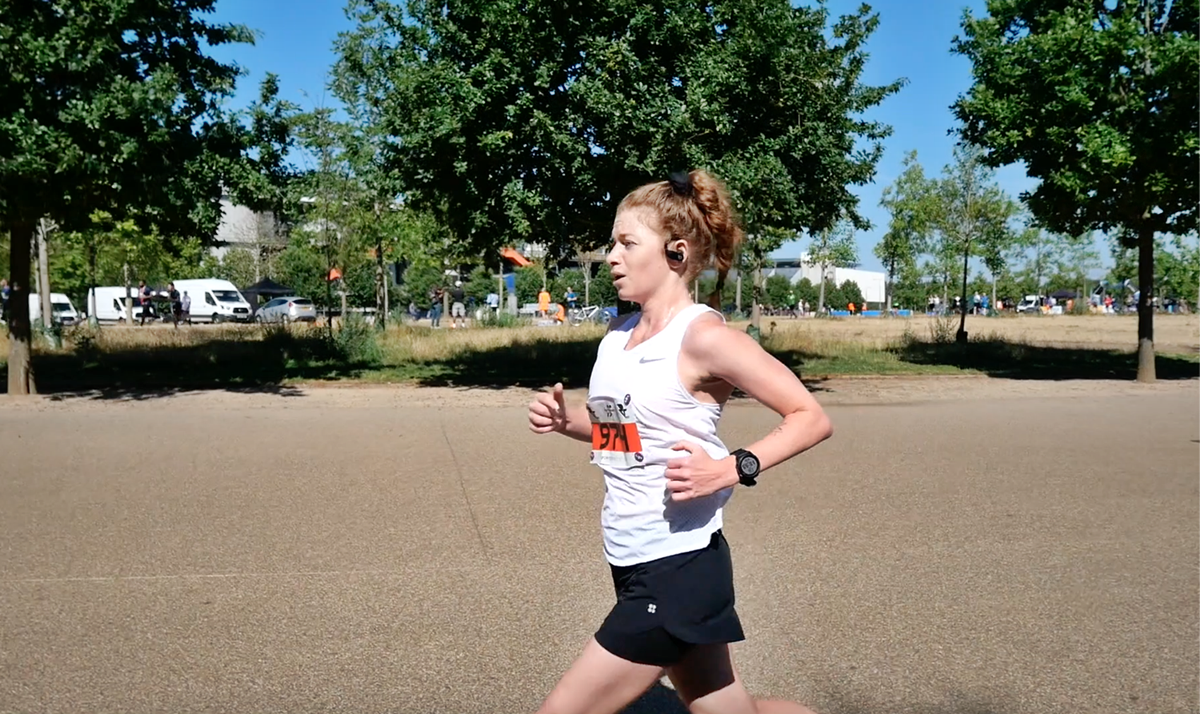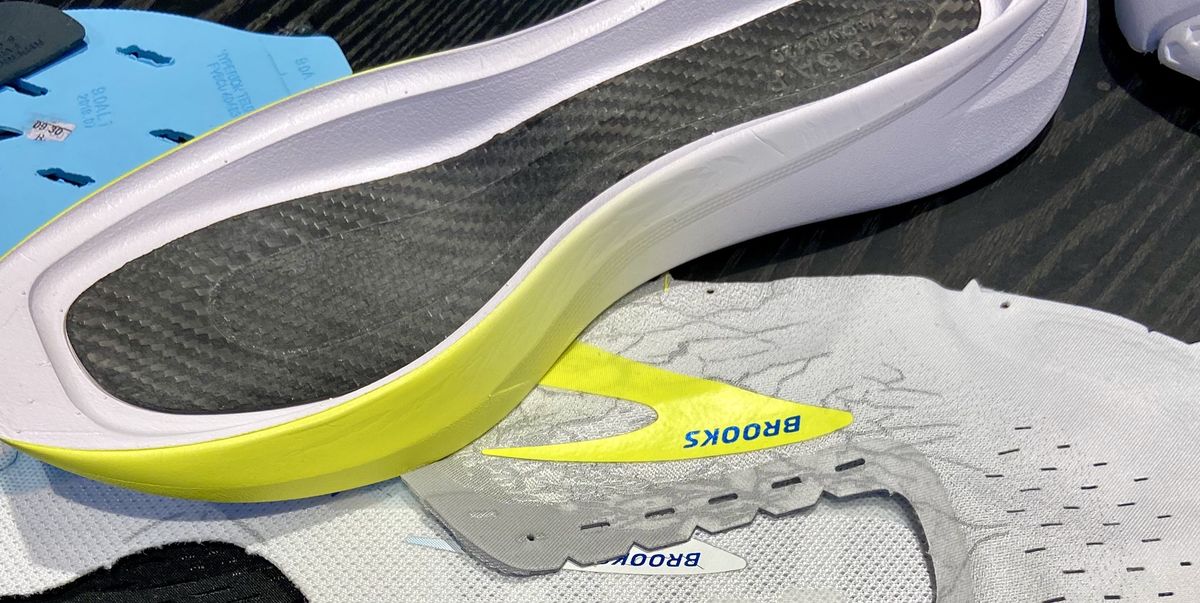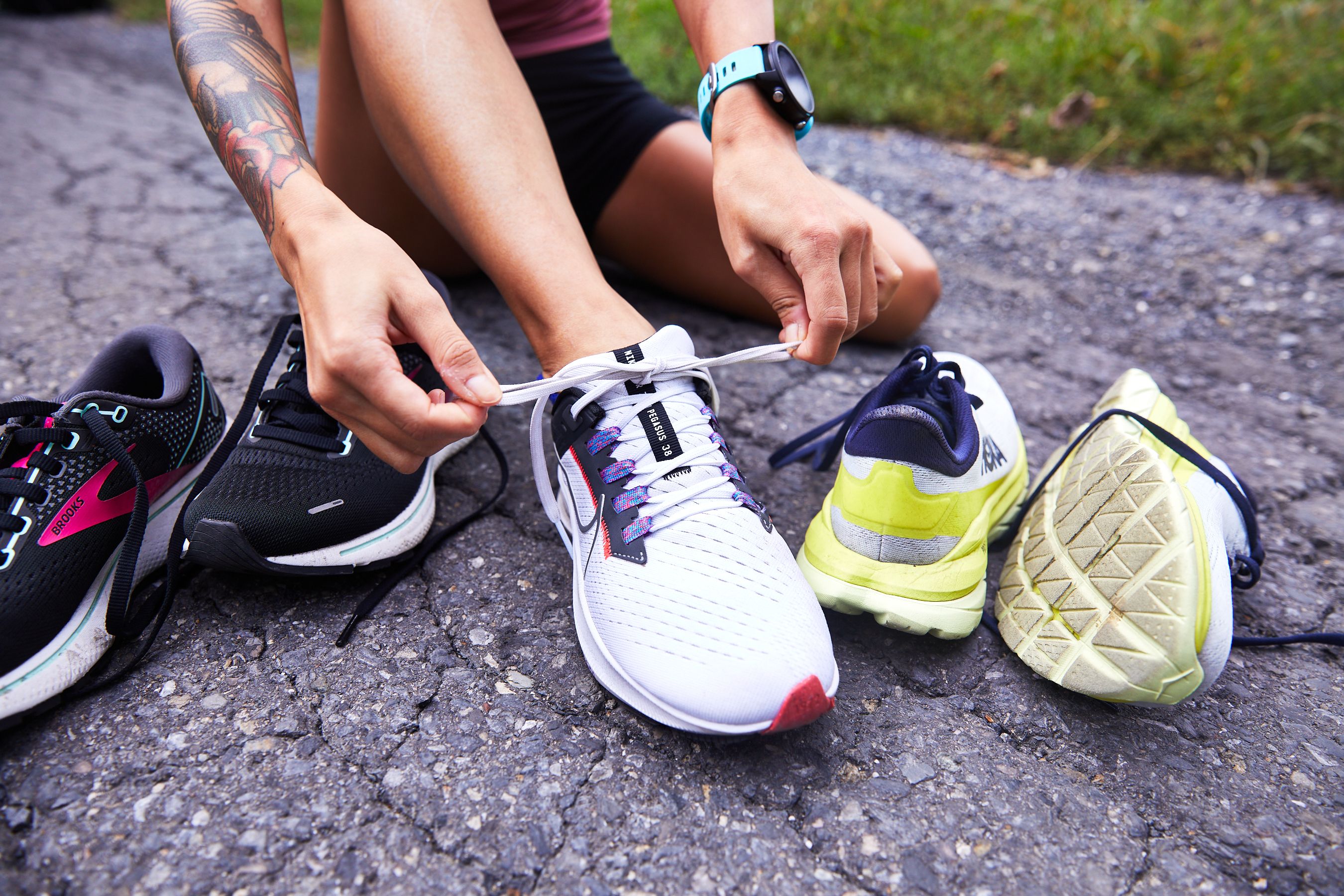

Featured
How To Get The Right Running Shoes
Modified: May 22, 2024
Find the perfect pair of running shoes with our featured guide. Learn how to choose the right shoes for your running style and maximize your performance.
Introduction
Choosing the right pair of running shoes is crucial for any runner, whether you’re a seasoned marathoner or just starting out on your running journey. The wrong shoes can lead to discomfort, pain, and even injuries, while the right shoes can maximize your performance and minimize the risk of injuries.
With so many different brands, models, and features available, finding the perfect running shoes may seem overwhelming. But fear not! In this article, we’ll guide you on how to get the right running shoes that are tailored to your individual needs.
When it comes to selecting the right pair of running shoes, there are several factors to consider. First and foremost is understanding your running style. Are you a neutral runner, an overpronator, or a supinator? Assessing your running style will help you determine the level of support and cushioning your feet require.
Another important factor to consider is your foot type. Do you have high arches, low arches, or neutral arches? This will impact the type of shoe you should be looking for. Additionally, understanding your arch height will help you choose the right level of arch support in your running shoes.
Furthermore, evaluating your gait cycle is essential in getting the right running shoes. Do you have a normal gait, a pronated gait, or a supinated gait? Knowing your gait cycle will aid in selecting the appropriate shoe category that aligns with your specific needs.
In the following sections of this article, we will dive into these factors in more detail and provide you with practical tips and insights on selecting the right running shoes. So, let’s get started and find the perfect pair of running shoes that will support you every step of the way!
Assessing your running style
Before diving into the world of running shoes, it’s important to assess your running style. Understanding how your feet and body move during a run will help you determine the type of support and cushioning you need in your shoes.
There are three main types of running styles: neutral, overpronation, and supination. Let’s take a closer look at each style:
- Neutral: Neutral runners have a natural gait with a slight inward roll of the foot (pronation) and a push-off from the big toe. They don’t overpronate or supinate excessively. If you’re a neutral runner, you can opt for neutral running shoes that provide balanced cushioning and support.
- Overpronation: Overpronation occurs when the foot rolls inward excessively during the gait cycle. This can lead to issues such as arch collapse and knee misalignment. If you’re an overpronator, look for running shoes with stability features like a medial post or dual-density midsole to control pronation and provide extra support.
- Supination: Supination, also known as underpronation, is when the foot doesn’t roll inward enough during the gait cycle. This can cause added stress on the outside of the foot and lower leg. If you’re a supinator, look for running shoes with cushioning and flexibility to absorb shock and encourage a more natural foot motion.
Assessing your running style can be done by observing wear patterns on your old running shoes. Excessive wear on the medial (inner) side of the shoe indicates overpronation, while wear on the lateral (outer) side suggests supination. If the wear is evenly distributed, it suggests a neutral running style.
In addition to wear patterns, it can be helpful to consult with a running specialist or visit a specialty running store for a gait analysis. They can analyze your running form and provide insights on your pronation and foot strike pattern.
By understanding your running style, you can narrow down your search for the right running shoes. Remember, finding the perfect pair of shoes that match your running style will provide the support and comfort you need to enjoy your runs and achieve your running goals.
Understanding your foot type
When it comes to choosing the right running shoes, understanding your foot type is essential. Your foot type plays a significant role in determining the level of support and stability you need in your shoes. There are three main foot types: high arches, low arches, and neutral arches.
High arches: If you have high arches, it means there is a significant curve along the inner side of your foot. This can result in less natural shock absorption, as the foot tends to have less contact with the ground. High-arched feet are prone to underpronation or supination, where the weight is distributed more to the outside of the foot. When selecting running shoes, look for models with ample cushioning and flexibility to help absorb shock and promote a more neutral foot motion.
Low arches: Low arches, also known as flat feet, have little to no arch along the inner side of the foot. This can lead to overpronation, where the foot rolls inward excessively during the gait cycle. Overpronation can result in excessive stress on the feet, ankles, and knees. If you have low arches, look for running shoes with motion control features and good arch support to help stabilize your feet and prevent overpronation.
Neutral arches: Neutral arches are considered the ideal foot type for running. A neutral arch creates a moderate curve along the inner side of the foot, allowing for better shock absorption and natural pronation. If you have neutral arches, you have more flexibility in choosing running shoes. Most shoe models will provide the appropriate level of cushioning and support without overcompensating for a particular foot type.
One simple way to determine your foot type is the wet test. Wet the soles of your feet and step on a piece of paper or a dark surface. Examine the imprint left behind. If you see a narrow, curved imprint connecting the heel to the ball of your foot, you likely have high arches. If the imprint shows almost the entire sole of your foot with little to no curve in the middle, you likely have low arches. If the imprint shows a moderate curve along the inside of the foot, you likely have neutral arches.
Understanding your foot type will help you narrow down your options when choosing the right running shoes. Remember, finding the right combination of arch support, cushioning, and stability for your foot type will enhance your running experience and reduce the risk of discomfort or injuries.
Determining your arch height
When it comes to selecting running shoes, determining your arch height is an important consideration. Your arch height can impact the level of support and stability your feet need. There are three main types of arch heights: high arches, low arches (flat feet), and neutral arches.
High arches: If you have high arches, it means there is a noticeable curve along the inner side of your foot. High-arched feet tend to have less stability and shock absorption due to a smaller surface area in contact with the ground. Runners with high arches are more prone to underpronation or supination, where weight is distributed more to the outside of the foot. When selecting running shoes, look for models with good cushioning and flexibility to help absorb shock and promote a more neutral foot motion.
Low arches (flat feet): Low arches, also known as flat feet, have little to no curve along the inner side of the foot. This can lead to overpronation, where the foot rolls inward excessively during the gait cycle. Overpronation can cause imbalances and increased stress on the feet, ankles, and knees. If you have low arches, look for running shoes with motion control features and good arch support to help stabilize your feet and prevent overpronation.
Neutral arches: Neutral arches are considered the most ideal foot type for running. A neutral arch creates a moderate curve along the inner side of the foot, allowing for better shock absorption and natural pronation. If you have neutral arches, you have more flexibility in choosing running shoes. Most shoe models will provide the appropriate level of cushioning and support without overcompensating for a particular foot type.
Determining your arch height can be done through a couple of methods:
- Wet Foot Test: Wet the soles of your feet and step onto a piece of paper or a dark surface. Assess the imprint left behind. If you see a narrow, curved imprint connecting the heel and ball of your foot, you likely have high arches. If the imprint shows the entire sole of your foot with little to no curve, you likely have low arches. If the imprint shows a moderate curve along the inside of the foot, you likely have neutral arches.
- Foot Analysis: Consult a running specialist or visit a specialty running store for a more comprehensive analysis of your foot type. They may use tools like a foot scanner to measure your arch height and provide personalized recommendations for running shoes.
Understanding your arch height will help you in selecting running shoes that offer the appropriate level of support and stability. By choosing shoes tailored to your arch height, you can enhance your running performance, prevent discomfort, and reduce the risk of injuries.
Evaluating your gait cycle
When it comes to choosing the right running shoes, evaluating your gait cycle is crucial. Your gait cycle refers to the process of how your foot moves from the initial contact with the ground to the push-off phase during a stride. Understanding your gait cycle can help you select the appropriate shoe category that aligns with your specific needs and promotes efficient and comfortable running.
There are three main types of gait cycles: normal/neutral, pronation, and supination.
Normal/neutral gait: A normal gait is characterized by a natural inward roll of the foot (pronation) when it strikes the ground and a push-off from the big toe. This allows for even weight distribution and efficient shock absorption. If you have a normal gait, you can choose from a wide variety of running shoe models, typically falling into the neutral category.
Pronation: Pronation occurs when the foot rolls inward excessively during the gait cycle. This can cause instability and lead to various foot and leg issues. There are three levels of pronation: mild, moderate, and severe. If you overpronate, your foot may require additional support to correct the alignment and prevent potential injuries. Look for running shoes labeled as stability or motion control, which are designed to control excess pronation and provide enhanced stability.
Supination: Supination, also known as underpronation, is when the foot doesn’t roll inward enough during the gait cycle. This can result in inadequate shock absorption and increased stress on the outer edge of the foot. Runners with supination tend to have higher arches and may require cushioning and flexibility in their shoes to compensate for the limited foot motion. Look for running shoes labeled as neutral or cushioned that provide ample shock absorption and promote a more natural foot motion.
Evaluating your gait cycle can be done through various methods:
- Gait analysis: A running specialist or a specialty running store can conduct a gait analysis using video analysis or treadmill observation. This will allow them to assess your foot strike pattern, pronation/supination, and overall running form.
- Shoe wear patterns: Examine the wear patterns on your old running shoes. Wear on the inner edge of the shoe often indicates overpronation, while wear on the outer edge suggests supination. Even wear along the sole typically corresponds to a normal/neutral gait.
By evaluating your gait cycle, you can select running shoes that provide the necessary support and stability to enhance your running experience and minimize the risk of injuries. Remember, finding the right shoe category that matches your gait cycle will contribute to a more efficient and comfortable stride.
Choosing the right shoe category
Now that you have a better understanding of your running style, foot type, and gait cycle, it’s time to explore the different shoe categories available. The right shoe category will provide the specific features and technologies that align with your individual needs and maximize your running experience.
There are generally three main shoe categories to consider: neutral, stability, and motion control.
Neutral shoes: Neutral running shoes are designed for runners with a normal or neutral gait who do not excessively overpronate or supinate. These shoes typically offer a well-balanced combination of cushioning and flexibility. Neutral shoes are suitable for runners with neutral arches and those who require minimal support and stability.
Stability shoes: Stability running shoes cater to runners who experience mild to moderate overpronation. These shoes feature added support and pronation control technologies, such as a medial post or dual-density midsole. Stability shoes help stabilize the foot and promote a more efficient and aligned stride. They are suitable for runners with low to normal arches who need extra support and stability.
Motion control shoes: Motion control running shoes are designed for runners with severe overpronation or flat feet. These shoes have robust support and stability features, including a firm midsole and reinforced arch support. Motion control shoes are essential in controlling excessive pronation and preventing potential injuries. They are suitable for runners with low arches or those who have severe pronation issues.
When choosing the right shoe category, consider your specific needs and the recommendations based on your running style and foot type. It’s important to find a shoe that provides the right balance of cushioning, support, and stability to optimize your running performance and reduce the risk of injuries.
Keep in mind that every shoe brand may categorize their models differently or offer additional subcategories within each main category. So, it’s crucial to try on different shoe models, regardless of their designated category, to find the one that feels the most comfortable and supportive for your feet.
Consulting with a running specialist or visiting a specialty running store can also be beneficial in finding the right shoe category for your specific needs. These experts can provide personalized advice based on your biomechanics and running goals.
Remember, choosing the right shoe category will play a significant role in enhancing your running experience and maintaining the health and wellbeing of your feet and lower body.
Trying on different shoe models
Now that you have a good understanding of your running style, foot type, and the different shoe categories, it’s time to put that knowledge into action by trying on different shoe models. Trying on shoes allows you to assess the fit, comfort, and overall feel of the shoes, helping you make an informed decision on which pair is right for you.
When trying on running shoes, follow these tips:
- Visit a specialty running store: Specialty running stores have trained staff who can assist you in finding the right shoes. They will take into account your running style, foot type, and any specific requirements you may have. Their expertise can be invaluable in guiding you towards suitable options.
- Bring your old running shoes: If you have previous running shoes, bring them along with you to the store. The wear pattern on the old shoes can provide valuable insights for the store staff to understand your running mechanics and make appropriate recommendations.
- Try on both shoes: Ensure you try on both the left and right shoe of the pair. Feet can have slight variations in size and shape, so it’s important to assess the fit of both shoes individually to ensure overall comfort and proper fit.
- Wear appropriate socks: Wear the type of socks you would typically wear during your runs. This will give you a better idea of how the shoes feel with the added thickness and material of your running socks.
- Take them for a test run: Most specialty running stores have a treadmill or a designated area where you can test the shoes by taking a short run. This allows you to assess the comfort, support, and overall performance of the shoes while in motion.
- Pay attention to fit: Consider the overall fit of the shoes. They should feel snug but not overly tight. You want a secure fit in the heel without any slippage, ample room in the toe box to wiggle your toes, and even pressure distribution along the sides of your feet.
Keep in mind that trying on shoes is a personal experience, and what works for one person may not work for another. Everyone’s feet have unique characteristics, so it’s important to prioritize your own comfort and preferences when making a decision.
Take the time to try on several different shoe models from various brands to find the one that feels the most comfortable and supportive for your feet. Don’t be afraid to ask questions and seek guidance from the store staff. Their knowledge and expertise can assist you in finding the perfect pair of running shoes that will boost your performance and keep you comfortable during your runs.
Checking for proper fit
When it comes to selecting running shoes, ensuring a proper fit is crucial for comfort, performance, and injury prevention. A shoe that fits well will support your feet, provide stability, and allow for a natural range of motion. Here are some tips for checking the fit of your running shoes:
- Length: Your running shoes should provide about a thumb’s width of space between your longest toe (usually the big toe) and the end of the shoe. This allows for proper toe movement and prevents discomfort or toe-related issues.
- Width: Your shoes should not feel too snug or too loose across the widest part of your feet. The upper should comfortably hug the sides of your feet without squeezing or causing any discomfort.
- Arch support: Check if the shoes provide adequate arch support for your specific foot type. The arch should be supported without feeling overly compressed or strained. Ensure that the arch support aligns with the natural curve of your arch.
- Heel fit: The heel should fit snugly without any slippage or excessive movement. Pay attention to any rubbing or discomfort at the back of your heel, as this can lead to blisters or irritation during longer runs.
- Toe box: The toe box should provide enough room for your toes to move and wiggle comfortably. Avoid any pressure or squeezing in the toe area, as this can lead to blisters or toenail issues over time.
- Walk and run in them: Take a few steps and do a short run in the shoes to assess their overall comfort and performance. Pay attention to any areas of discomfort, rubbing, or pressure points. The shoes should feel supportive and allow for a natural range of motion.
- Try different sizes and models: Don’t be afraid to try different sizes or even different models from the same brand. Each shoe can have slight variations in fit, and what works for one person may not work for another. Be open to exploring different options until you find the perfect fit.
Remember, the fit of your running shoes can evolve over time, so it’s important to regularly reassess and replace your shoes as needed. As your feet change and your running style adapts, your shoe needs may also change.
Additionally, it’s recommended to try on shoes at the end of the day when your feet are slightly swollen, similar to how they would be during a run. This will give you a more accurate idea of how the shoes will feel during your actual running sessions.
Choosing running shoes with a proper fit is crucial to your comfort and performance as a runner. Take the time to find the right size, width, and support that suit your feet and running style. A well-fitting pair of running shoes will provide the foundation for a positive and enjoyable running experience.
Considering additional shoe features
When selecting running shoes, it’s important to consider additional features that can enhance your overall running experience and provide added support and comfort. While the main factors like running style, foot type, and fit are crucial, these additional features can further customize your shoe choice and meet your specific running needs. Here are some key features to consider:
- Cushioning: The level of cushioning in running shoes can vary. Some runners prefer a plush and cushioned feel to absorb impact, while others prefer a firmer and more responsive ride. Consider your preferences and the level of cushioning that feels comfortable to you.
- Breathability: Look for shoes with breathable materials and mesh panels to allow for better airflow and keep your feet cool and dry during your runs. This is especially important in warmer climates or during longer runs where your feet may sweat more.
- Traction and outsole: Consider the type of terrain you typically run on. If you frequently run on trails or in wet conditions, look for shoes with a durable and grippy outsole that provides traction and stability. For road running, a smoother or more flexible outsole may be suitable.
- Weight: The weight of the shoes can impact your running performance, especially for speed workouts and races. Lighter shoes can provide a more agile and responsive feel, while slightly heavier shoes may offer added durability and support. Consider your running goals and preferences when evaluating the weight of the shoes.
- Reflectivity: If you often run in low-light conditions, consider shoes with reflective elements that enhance your visibility to motorists and other pedestrians. This added safety feature can help improve your visibility and reduce the risk of accidents.
- Water resistance: If you frequently run in wet or rainy conditions, shoes with water-resistant or waterproof uppers can help keep your feet dry and protected. This can prevent discomfort and potential issues like blisters or foot irritation from wet conditions.
- Insole and customizable features: Some running shoes offer removable insoles or allow for customization with orthotics. If you have specific foot conditions or require additional support, consider shoes that provide options for personalized adjustment.
Remember, these additional features should be considered in conjunction with your running style, foot type, and fit. Prioritize the factors that are most important to your individual needs and running preferences.
Exploring these additional features can help you find a shoe that caters to your specific requirements and enhances your running performance. Assess your priorities and choose the features that will make your runs more comfortable, enjoyable, and supported.
Avoiding common shoe buying mistakes
When it comes to buying running shoes, it’s important to avoid common mistakes that can lead to discomfort, injury, or dissatisfaction with your purchase. By being aware of these mistakes, you can make informed decisions and find the perfect pair of running shoes. Here are some common shoe buying mistakes to avoid:
- Ignoring your running style and foot type: Understanding your running style, foot type, and gait cycle is essential in choosing the right shoes. Avoid the mistake of buying shoes solely based on appearance or recommendations from others. Each person’s feet and running mechanics are unique, so take the time to assess your own needs before making a purchase.
- Not getting fitted by an expert: Visit a specialty running store or consult with a running specialist who can properly assess your feet and provide recommendations. They have the knowledge and expertise to guide you towards the right shoe category and ensure a proper fit.
- Buying shoes that are too small or too big: Avoid the mistake of choosing shoes based solely on the size printed on the label. Different shoe brands and models may fit differently, so always try on multiple sizes and styles to find the best fit for your feet. Remember, your feet can also change over time, so reassess your size periodically.
- Forgetting to try on different shoe models: Trying on only one shoe model can limit your options. Even within the same shoe category, different models can offer varying levels of cushioning, support, and fit. Explore different models to find the one that feels the most comfortable and suits your running needs.
- Overlooking proper shoe fit: Pay close attention to the fit of the shoes, including the length, width, and snugness around the heel and toe box. Don’t compromise on fit for aesthetics or brand loyalty. Ill-fitting shoes can lead to discomfort, blisters, or even injuries. Prioritize comfort and functionality over style.
- Not considering the intended use: Take into account the terrain and distance you typically run when selecting shoes. Different shoe features and designs are better suited for specific surfaces and distances. Choose shoes that are appropriate for your running activities to optimize your performance and reduce the risk of injuries.
- Ignoring signs of wear and tear: Running shoes have a shelf life. Avoid the mistake of holding onto worn-out shoes for too long. As the cushioning and support degrade over time, the shoes lose their effectiveness and can lead to discomfort or increased risk of injuries. Regularly assess the condition of your shoes and replace them when necessary.
By avoiding these common shoe buying mistakes, you can make confident and informed decisions when choosing your running shoes. Prioritize fit, comfort, and functionality to find the pair that will support you in achieving your running goals, keeping you comfortable and injury-free.
Conclusion
Choosing the right running shoes is essential for any runner to optimize performance, prevent injuries, and ensure a comfortable running experience. By understanding your running style, foot type, and gait cycle, you can narrow down your options and find the perfect pair of shoes that cater to your individual needs.
Assessing your running style allows you to determine the level of support and cushioning required. Understanding your foot type, including arch height, helps in selecting the right level of support and stability. Evaluating your gait cycle ensures proper alignment and stride efficiency.
Once you have a good grasp of these factors, you can then choose the right shoe category – neutral, stability, or motion control – that aligns with your needs. Trying on different shoe models and checking for a proper fit is crucial to finding the perfect pair of running shoes. Consider additional features such as cushioning, breathability, traction, and weight to further customize your shoe choice.
Avoid common shoe buying mistakes like ignoring your running style and foot type, not getting fitted by an expert, buying shoes that are too small or too big, and overlooking signs of wear and tear. By being mindful of these mistakes, you can make informed decisions and choose shoes that provide the support, comfort, and functionality you need for your running endeavors.
Remember, finding the right running shoes is not a one-size-fits-all approach. Each runner is unique, and what works for one person may not work for another. Take the time to understand your own needs, consider expert advice, and prioritize fit and comfort.
With the right pair of running shoes on your feet, you can confidently tackle your runs, knowing that you have the support and protection needed to perform at your best. So lace up, hit the roads or trails, and enjoy the journey towards reaching your running goals!
